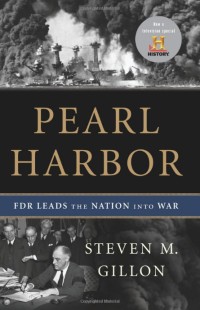The Christmas Festival in the Changing Course of Time
Lecture by Rudolf Steiner, December 22, 1910, Berlin. GA 125
Published by Anthroposophic Press in 1988, translated by Ernst Katz and edited by Marguerite Miller Click to Buy this Book!
Offering a review on the Now I See bLog related to the Christmas season was felt to be appropriate, especially amidst the line-up of very serious, contemporary books currently presented on the bLog, or soon Coming. Each Christmas season, a non-fiction story from any source, including lectures, articles or books, can be offered. This year the selected lecture by Rudolf Steiner fits perfectly under the previously-established category: Steiner’s Works. This special Christmas review will continue on the Now I See home page through Epiphany, January 6, 2013.
Rudolf Steiner begins this lecture with reference to the city in which he was then living, Berlin: “When we wander this time of year through the streets of large cities, we find them full of all sorts of things which our contemporaries want to have for their celebration of the approaching Christmas festival. And yet, if we contemplate what will take place in the coming days in large cities such as ours, we may well ask: Does all this correspond rightly to what is meant to flow through the souls and hearts of men?” Such preparations and celebrations “… fit in poorly with all the other happenings of modern civilization around us, and equally poorly with what should live in the depth of the human heart as a commemorative thought of the greatest impulse which humanity has received in the course of its evolution.” He recalls a genuine mood that prevailed during the Christmas season as late as the time of his own childhood, when small groups of actors would perform plays of “The Holy Story” and “The Three Kings” that required many weeks of rehearsal. There was awareness then that the whole human being, including his mind and morals, must be cleansed and purified if he wished to partake in art in a worthy way. People then naturally felt man’s path from heaven to earth through the Fall – and the re-ascent of man through Christ from earth to heaven – and they understood what was meant when the Tree of Knowledge in paradise was mentioned.
Since neither the Christmas mood of old nor the modern celebrations are appropriate, how then is Christmas to be experienced in our time? Today we must have the opportunity “… to find again the divine-spiritual world, precisely by an even stronger and more meaningful deepening of the soul … We need ways which will lead us to a wellspring in human nature that lies deeper, to a wellspring of human nature which, in a certain sense, is independent of external time.” New moods and deeper feelings for the Christmas season can awaken in us “… if we consider what can be born in our own soul when our innermost wellspring is so well-attuned to what is sacred, so purified through spiritual knowledge, that this wellspring can take in the holy mystery of the Christ Impulse … When Christ will be born in our own soul at the Christmastide of our soul, we may then look forward to the Eastertide, the resurrection of the spirit in our own inner life … The child of light, whom we have nurtured throughout the entire year by immersing ourselves in the wisdom-treasures of Spiritual Science, is to be born.”
The symbols illustrated on the book cover shown are explained in Signs and Symbols of the Christmas Festival, a lecture by Rudolf Steiner, Berlin, 1906, GA 96. The symbols are placed on the new Christmas tree, and the star at the top of the tree signifies the star of mankind developing itself. In the Signs and Symbols lecture Rudolf Steiner also stresses: “Man lives on toward a state when the light shall be born in him.” – Review by Martha Keltz
This excellent lecture can be read and studied on-line at: http://wn.rudolfsteinerelib.org/Festivals/Christmas/ChrFes_index.html, or purchased from Amazon.com.
—
And now, a little bit about RUDOLF STEINER (1861-1925): Philosopher, scholar, scientist, and educator, he was the founder of Anthroposophy, a modern spiritual path or science. Out of his spiritual researches, he was able to provide indications for the renewal of many human activities, including education (the Waldorf Schools), agriculture (Biodynamics), medicine (Anthroposophical Medicine), special education (the Camphill Movement), economics, philosophy, and religion. In 1924, he founded the General Anthroposophical Society, which today has branches throughout the world.




